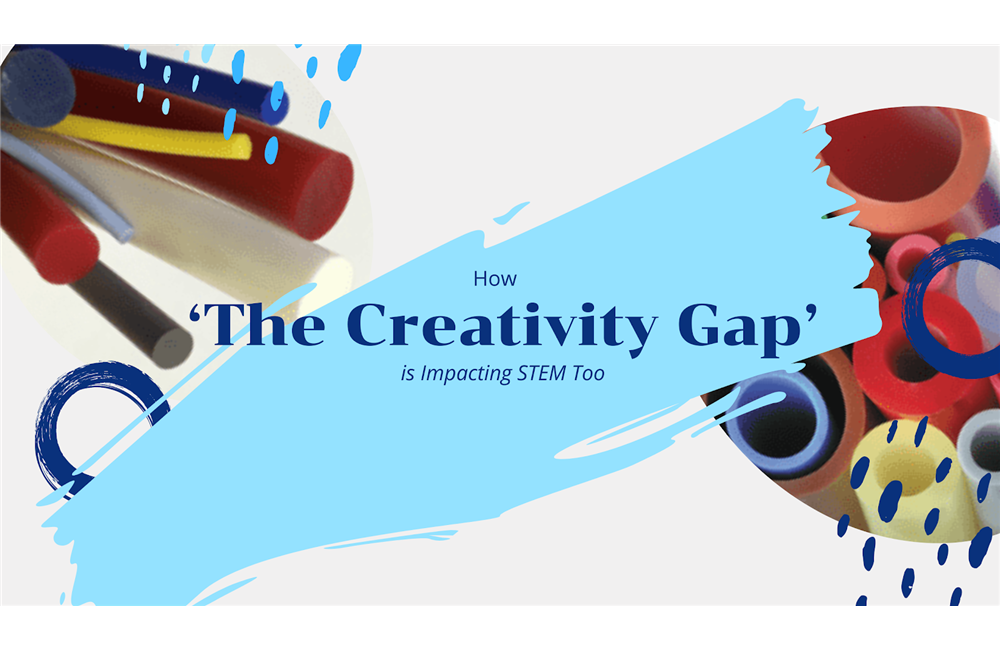How the ‘Creativity Gap’ is Impacting STEM Too
27 Jan, 202010 minsCreativity has long been thought of as the property of the humanities- which are in tu...

Creativity has long been thought of as the property of the humanities- which are in turn placed at the distant end of a binary from STEM. This is of course more an example of institutional fence building than any inherent alignment. The result is a growing trend in STEM graduates left underprepared for the workplace as they have misunderstood the importance of creativity for innovation. As suppliers to a range of STEM industries, from Civil Engineering to Energy Generation, Viking Extrusions see trends emerging across a range of sectors. This particular trend has been especially apparent in the rapidly growing aerospace industry, where the need for innovative and eco-friendly materials is paired with an unprecedented increase in demand for new aircraft.
The tension between humanities and the sciences has long-standing roots: way back in 1959, CP Snow gave a Rede Lecture The Two Cultures, discussing the arbitrariness of dividing education between these two monolithic fields. Snow was speaking against what he felt to be an overindulgence of the humanities- but now we have perhaps gone too far in “correcting” this. Many are now advocating for an A to be introduced to the STEM acronym; using STEAM to underline the importance of the Arts to these fields.
STEM job roles are both highly technical and highly creative, nurturing creativity is essential for meeting the needs of a growing and rapidly developing market. Moving into 2020, we are seeing acutely how misunderstanding the importance of creativity for innovation has left many STEM graduates underprepared for work in the real world.

Creativity as it is taught in schools and universities centres around several principles that are essential for good work across all sectors. Core creative skills include the ability to identify unexpected connections, parallels or relationships; to integrate lateral and vertical thought, bringing fresh perspectives to problem-solving; and transforming seemingly abstract ideas into a reality. Here the whole creative process is taught, whereas when we consider ‘creativity’ as an abstract concept from the outside, we’re often thinking of only the results.
Creativity centres lifelong learning - driving home the knowledge that learning, developing and practising a skill doesn't mean you can't improve in that area. Conversely, you can be both knowledgeable enough (or skilled enough) in an area to make a meaningful contribution and still have room to develop, learn and grow. Another core element of creative exploration is the ability to pull back and gain perspective on your own ideas. Following R&D, we must gain clarity and perspective on a cloud of solutions and move forward in a single, refined direction.

The end results of creative practice are important - but the working process that begets them is equally packed with valuable skills for all fields. Each of these processes are essential for producing consistent quality research that is both reflexive and able to respond to a quickly changing field.
Unfortunately, aligning creativity with solely the humanities has had a detrimental impact. Schools, and now many universities, are teaching STEM as information to retain rather than a process, lens or skill to be continuously developed. Application of creative processes to innovation is a skill and must be practised. Individuals working in the creative field work hard to keep these parts of their brain active, build pathways to create ideas. In the words of Harvard University’s professor emeritus of education Elliot Eisner; “Learning through the arts promotes the idea that there is more than one solution to a problem or more than one answer to a question.”
The tech industry is an excellent example of how product innovation depends not simply on technical skills and problem-solving, but on active collaboration and interaction between multiple disciplines - design, engineering and psychology all work together to produce an innovative and intuitive product. Unfortunately, this collaborative spirit isn't being consistently encouraged - yet across the board, industry leaders are seeking creativity; in an IBM Global CEO Study, 1500 CEOs rated creativity as the “most crucial factor for future success.”

A notable global study by Adobe Corporation in 2016 found that:
82% of respondents reported that creativity itself is the key to fostering innovation
78% thought creativity increases productivity
70% believed creative skills are key to being better workers and leaders
Just 40% felt that they were creative
In the analyses of these results, two leading factors identified in causing this ‘creativity gap’ were the education system and the structure of our daily jobs: both stifle creativity in favour of demanding perceived productivity.

Returning to the aerospace industry, the creativity gap has led to a pressing need for innovators in the sector. At present, the backlog of orders amounts to nearly a decade of production at the current annual rate. Increased demand coincides with a growing pressure to reduce industry-wide environmental impact. To meet this demand much greater efficiency is needed in production methods.
As climate crisis intensifies, so does the need to reinvent and reimagine material whilst keeping in mind the aesthetic demands of commercial aircraft interiors. Beyond simply the engineering and production processes, the materials themselves that planes are being built of drastically need to change and improve in order to improve efficiency and reduce carbon output.
STEM does not exist outside of or in contrast to problems faced by the humanities. It is important to reinvent the entirety of how we are structuring our education and our day to day work jobs, to include space for creativity. For people seeking career advice (and looking to land jobs in the sector)- it's important to keep in mind the necessity of creativity in the STEM sector, as these roles are both highly technical and highly creative.


